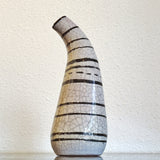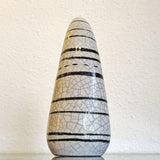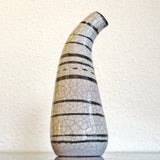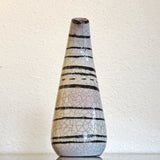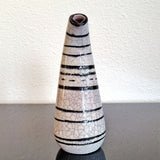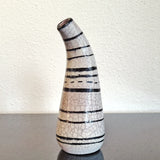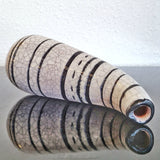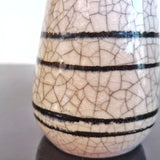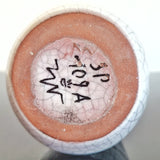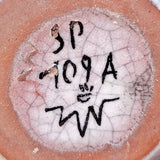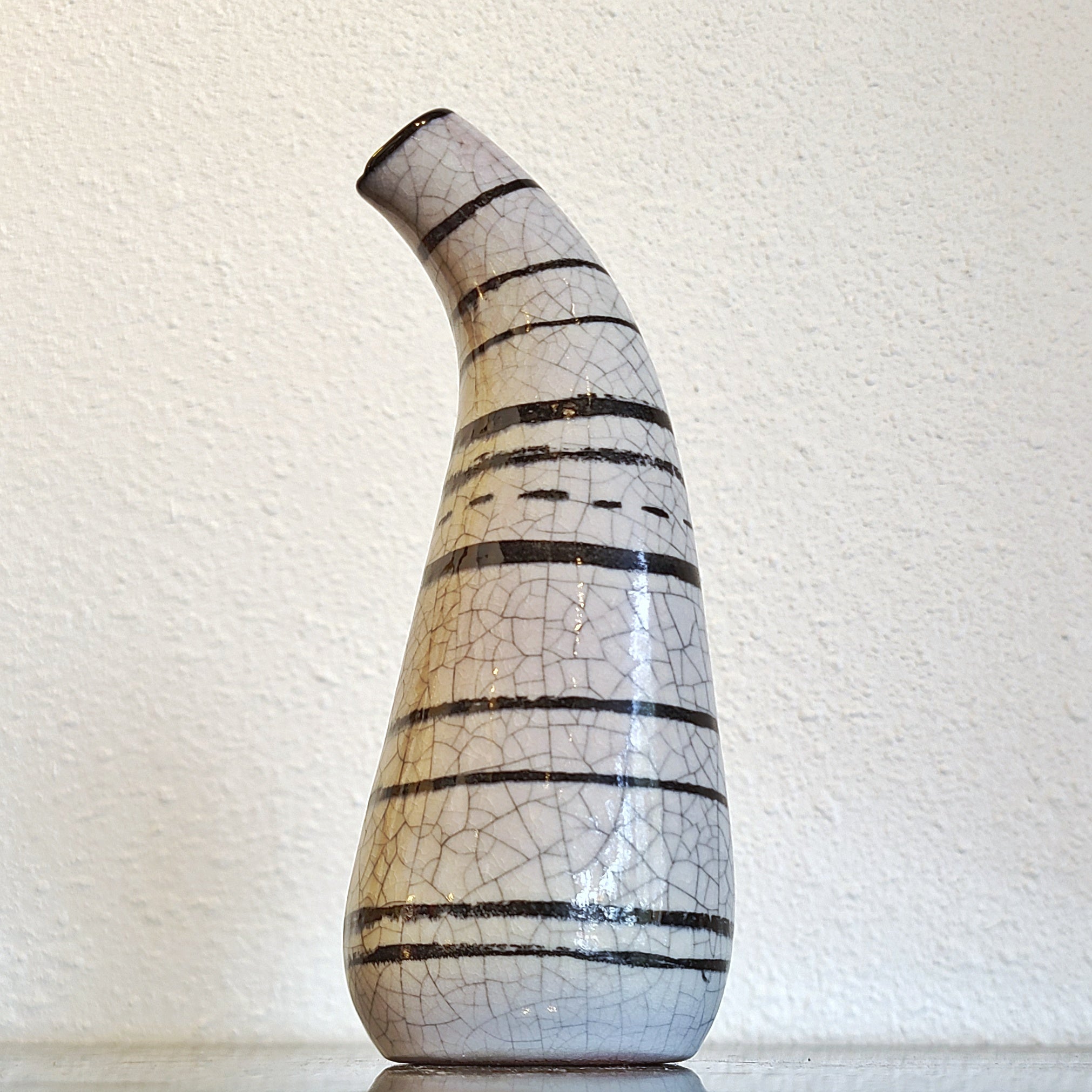
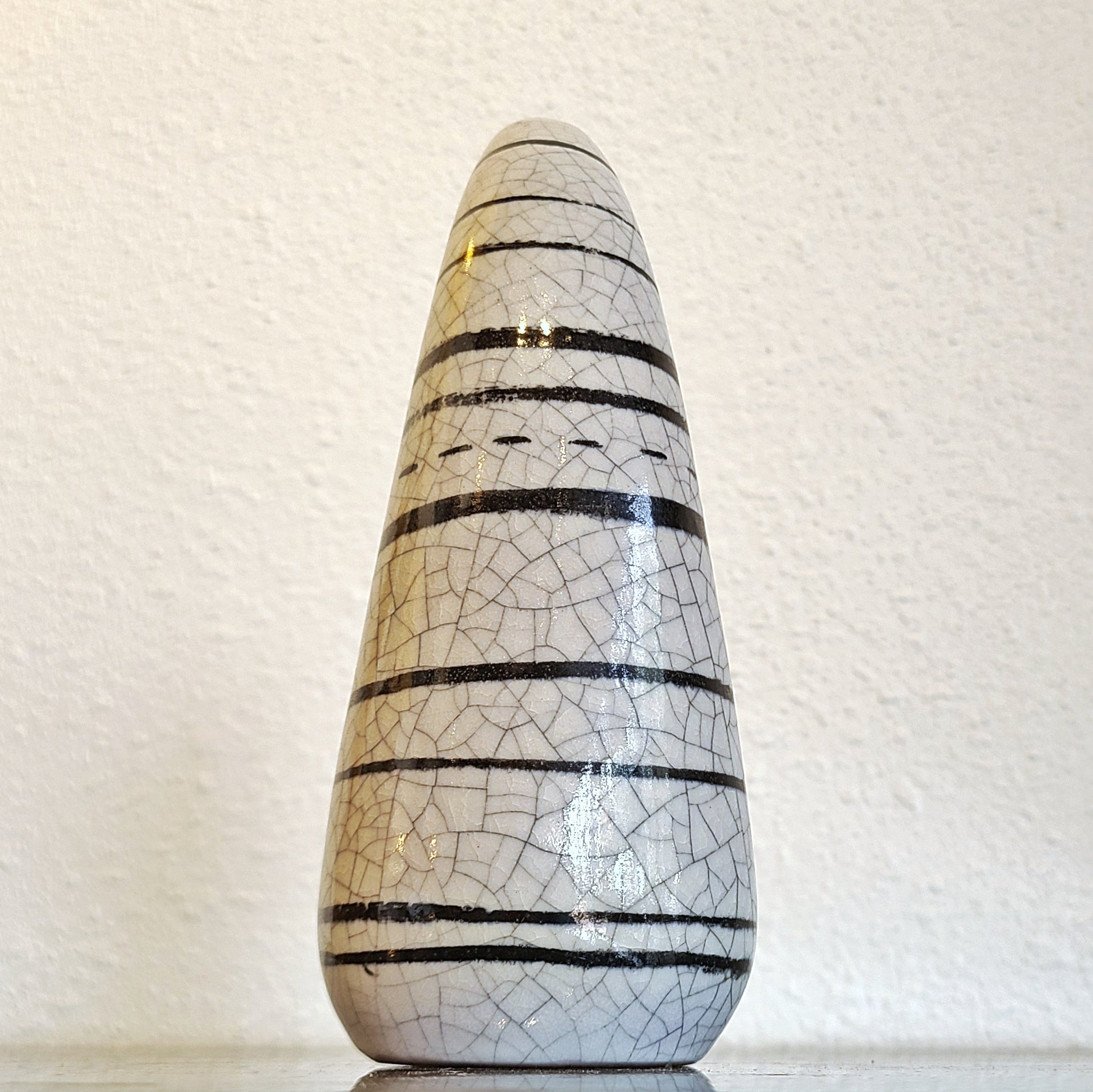
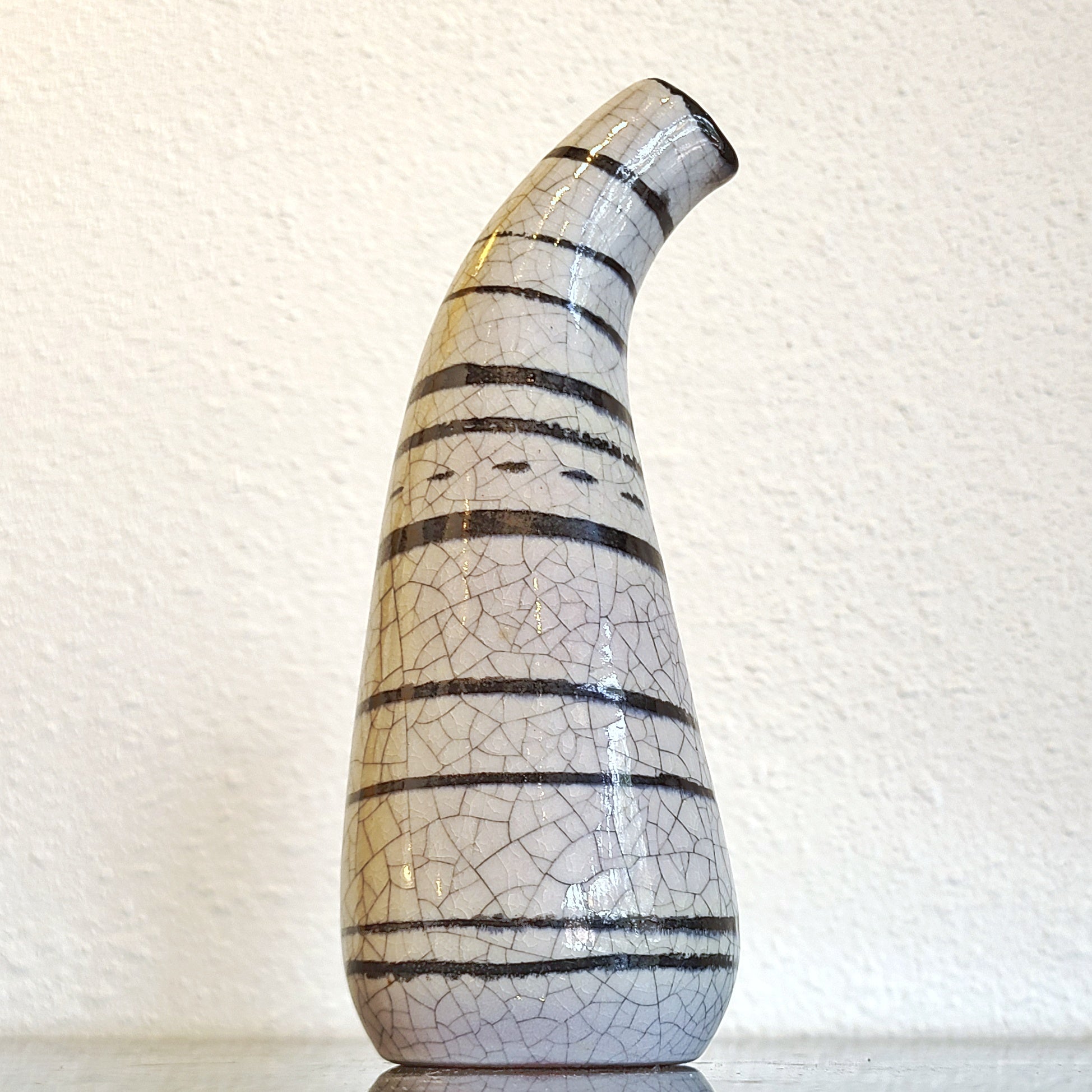
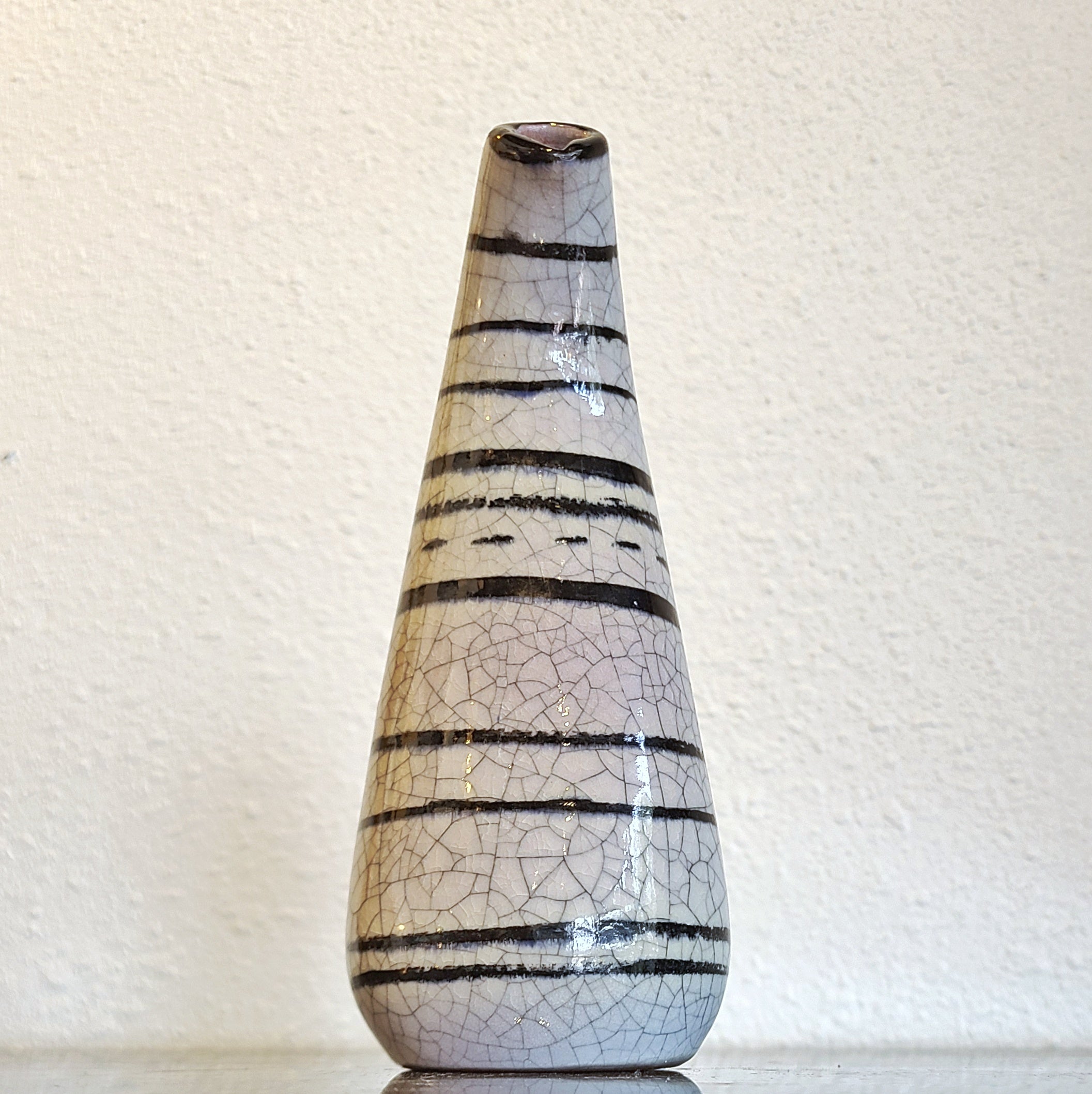
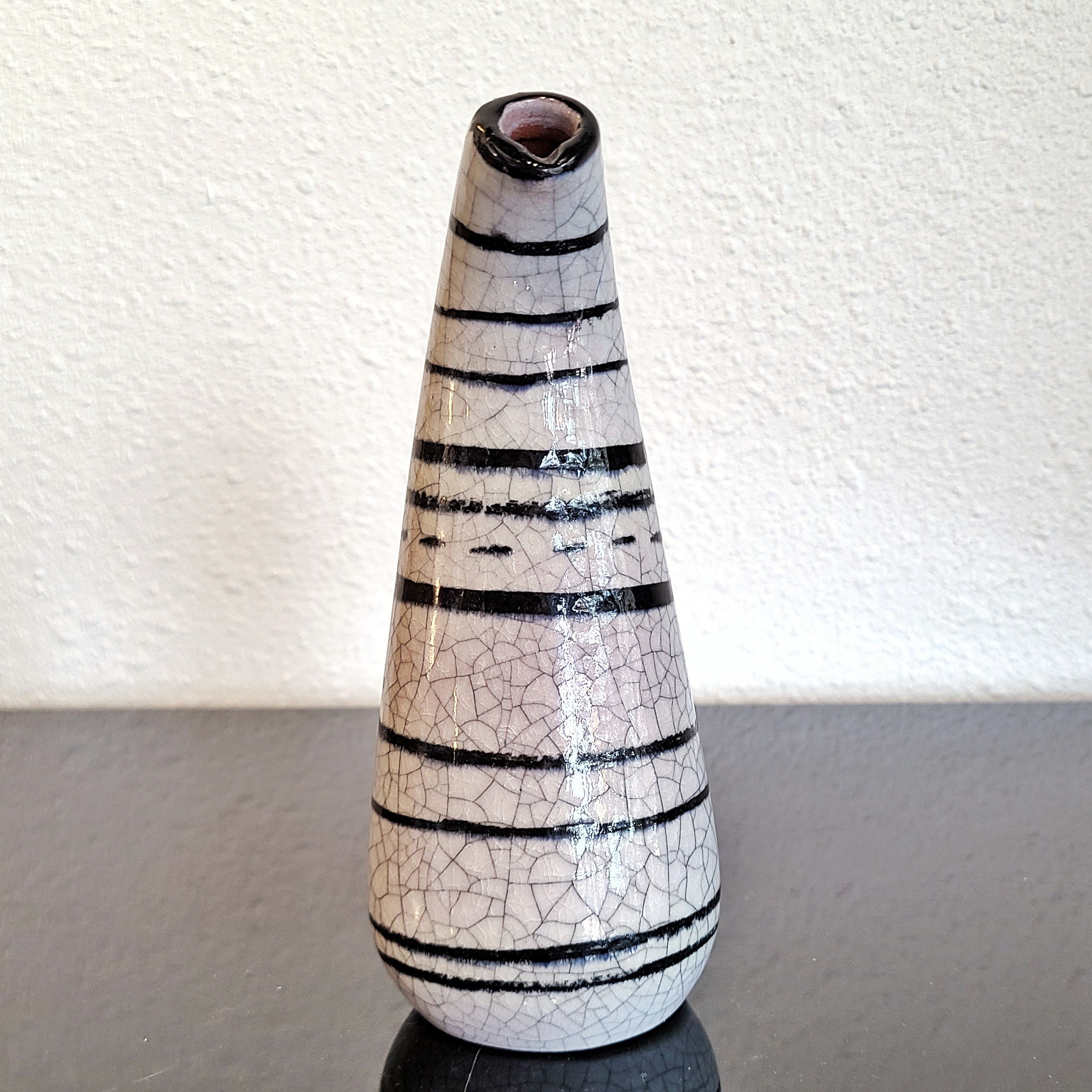
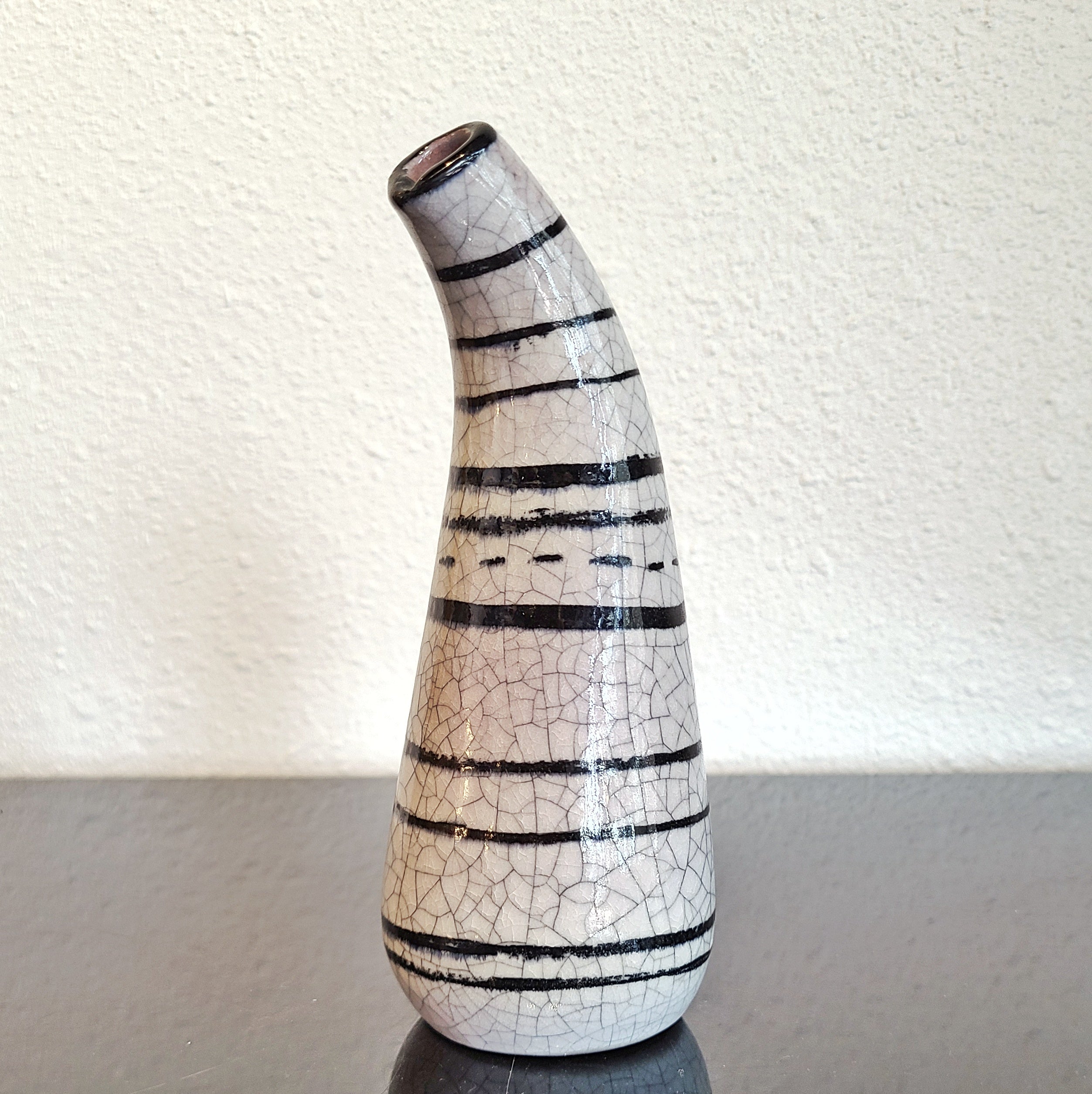
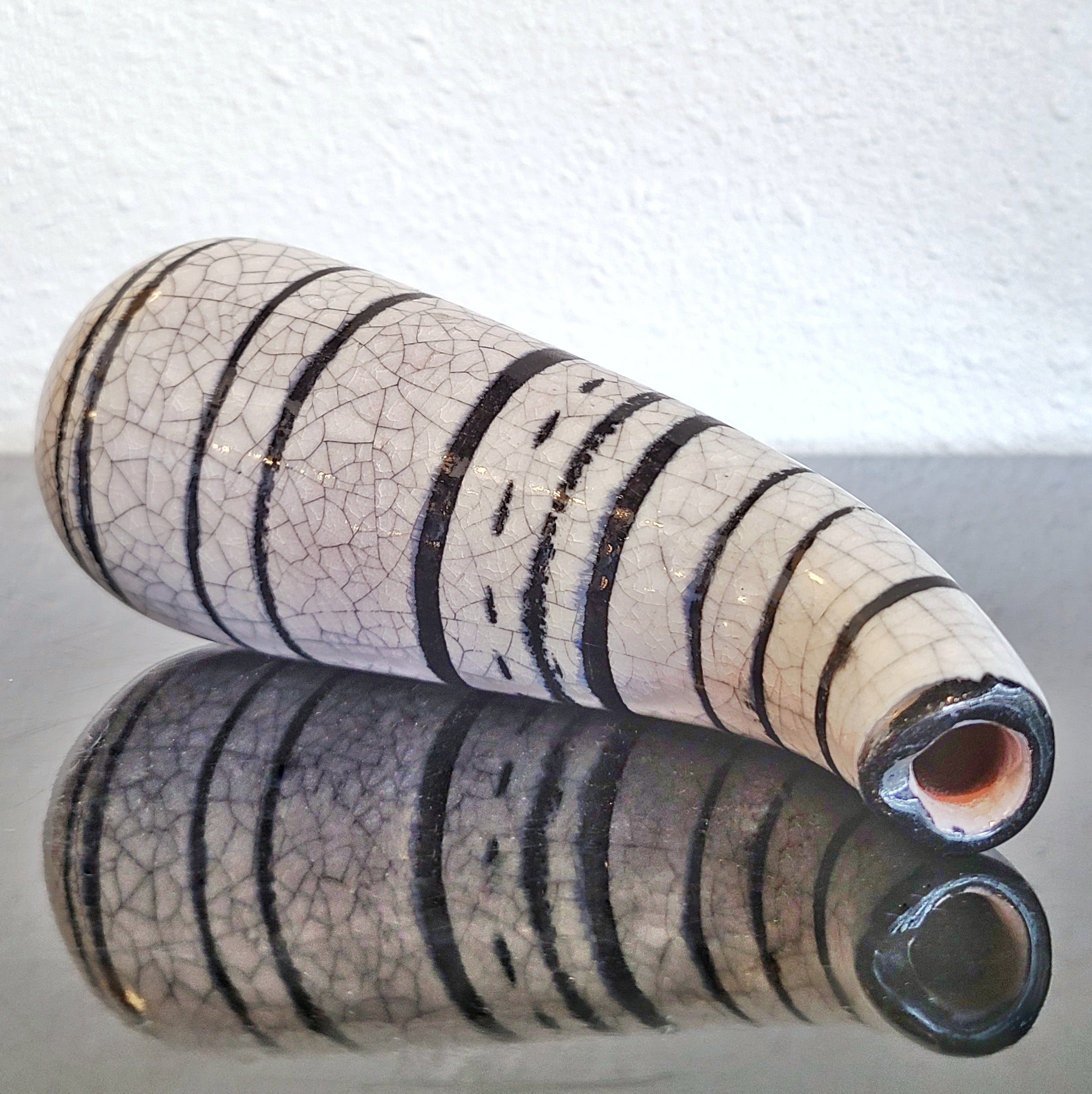
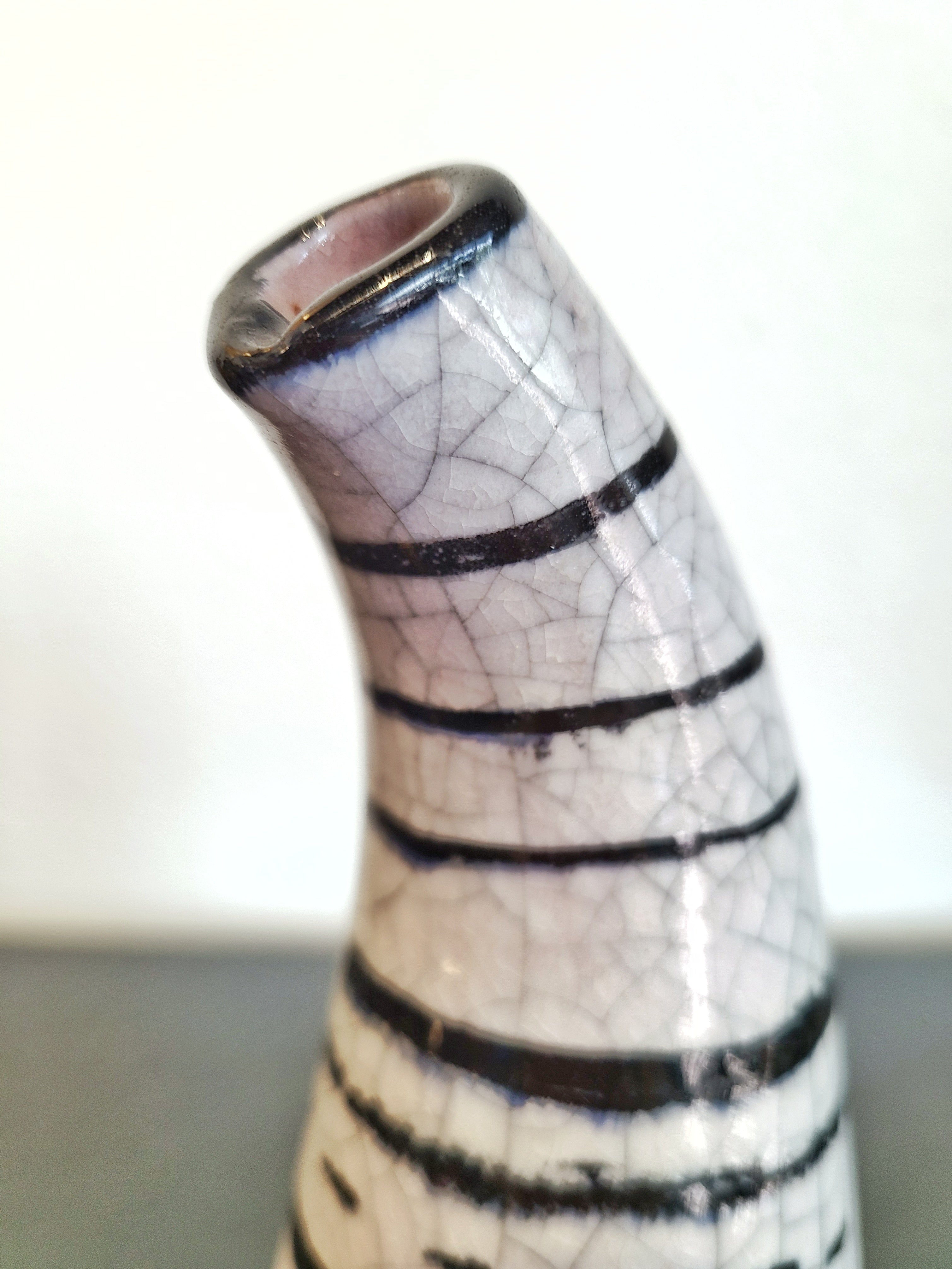
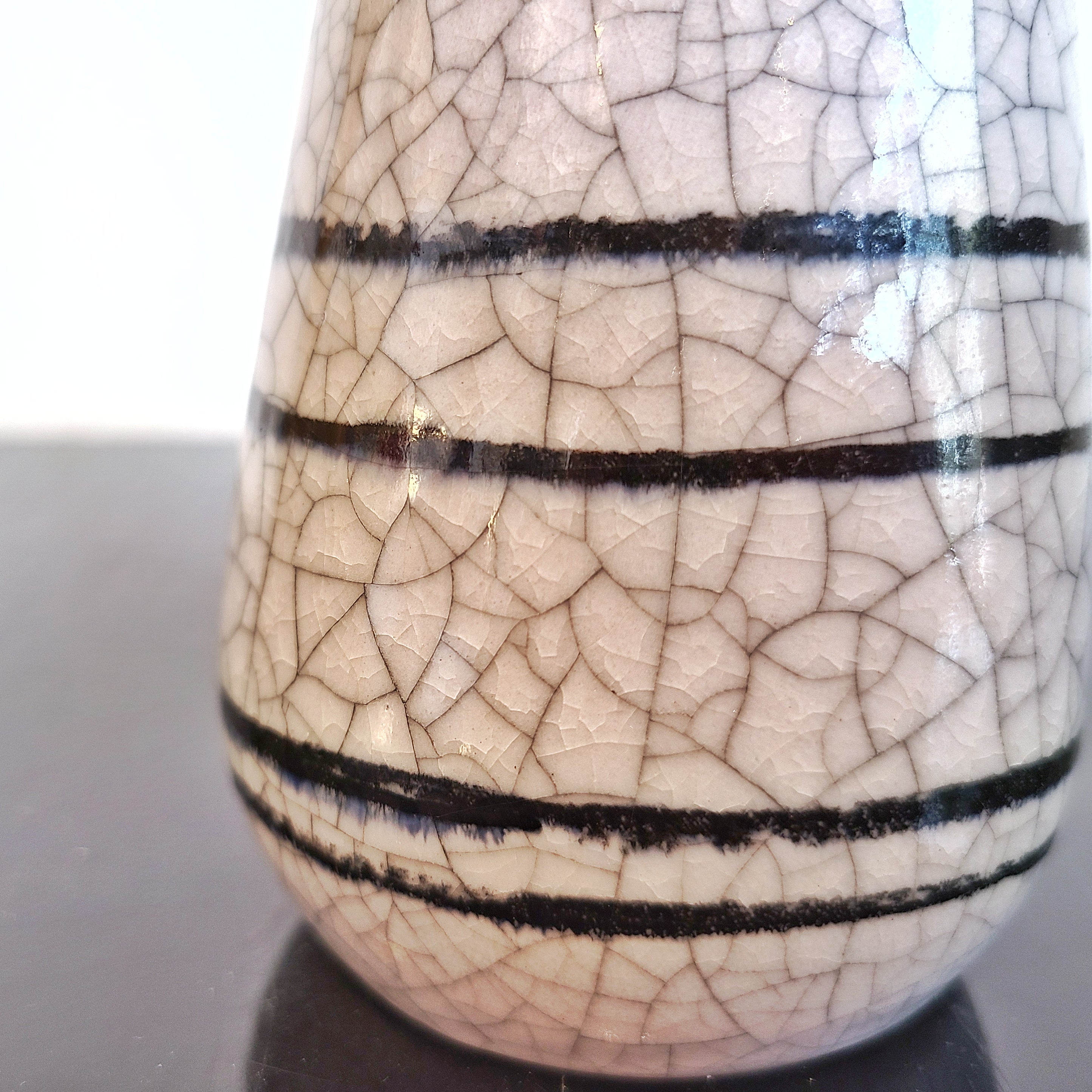
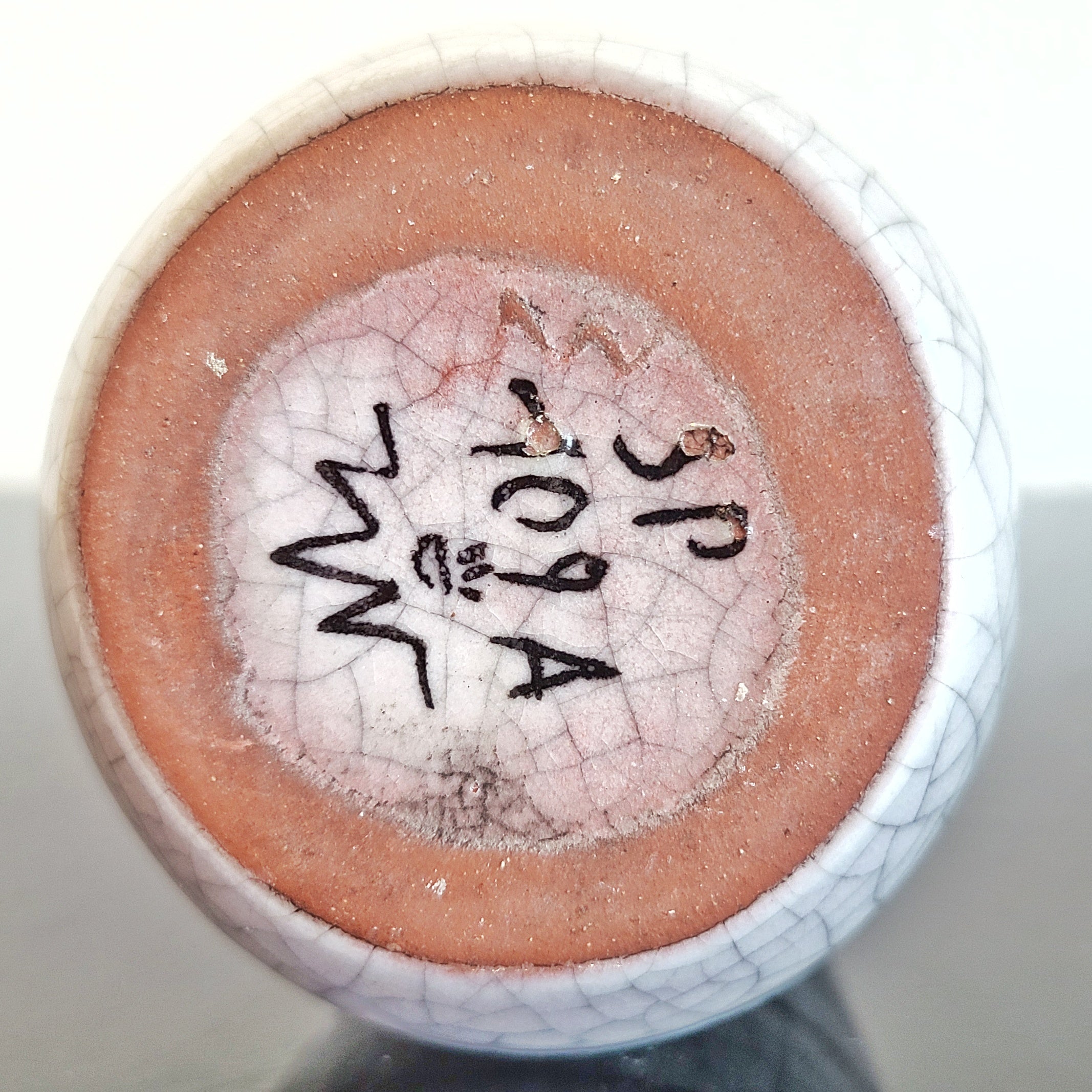
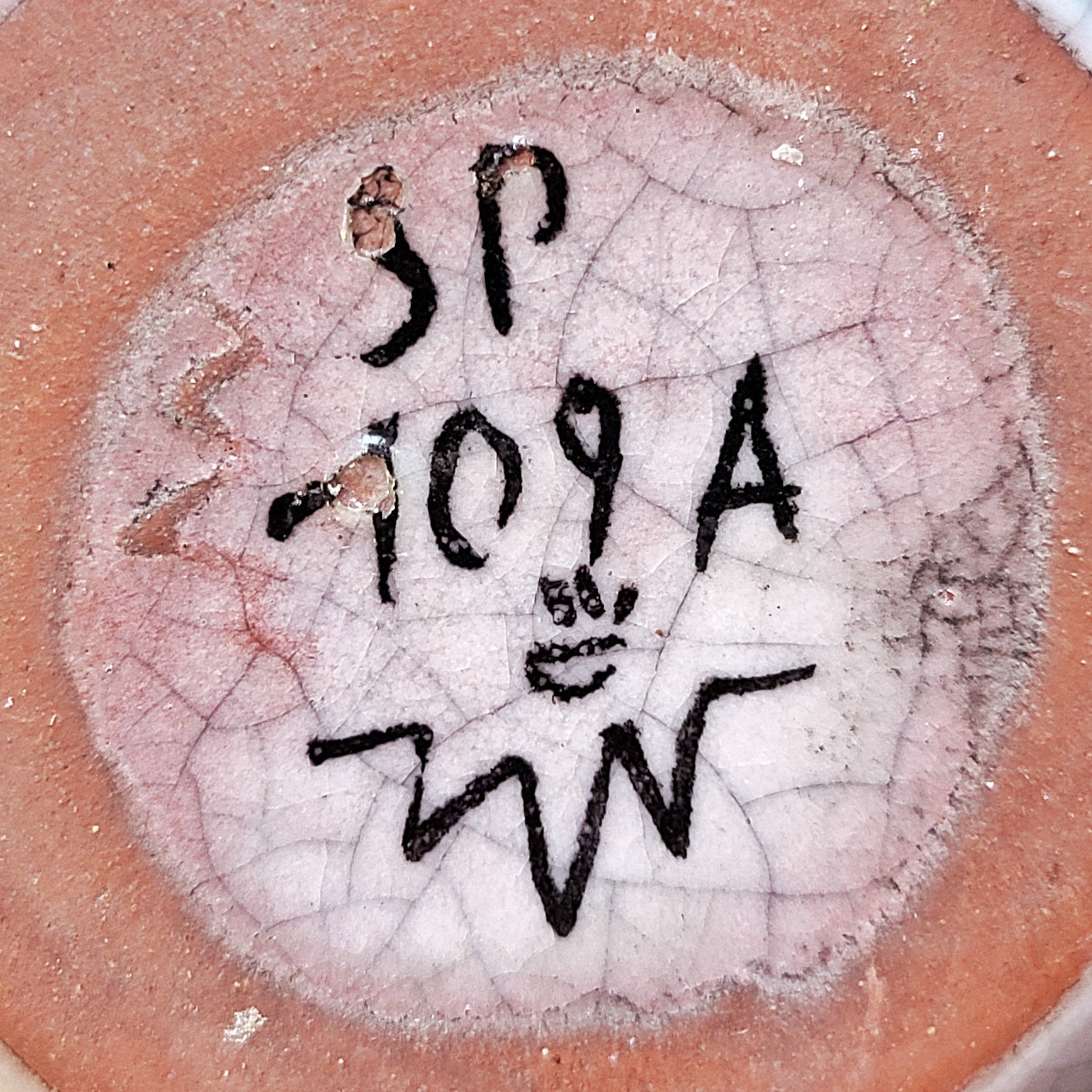
RARE ERWIN SPULER VASE FROM HIS KARLSRUHE STUDIO
CONTACT US HERE ABOUT THIS ITEM.
This quirky handmade vase was created by Erwin Spuler in his studio at the factory workshop of MAJOLIKA KARLSRUHE in 1951. Perfect condition; signed and marked on the bottom.
ERWIN SPULER (1906–1964) was born in the Bavarian city of Augsburg, Germany. He was a painter, ceramicist, graphic artist, filmmaker, and sculptor, who was particularly active in the field of architectural art. From 1922 to 1923 he studied at the Württemberg State School of Applied Arts in Stuttgart under Gustav Jourdan, Alfred Lörcher, and Hans von Heider. He continued his education from 1923 to 1924 at the Badische State Art School in Karlsruhe with Georg Scholz, Karl Dillinger, and Ernst Würtenberger. In Karlsruhe he developed a close friendship with Karl Hubbuch (1891–1979) with whom he collaborated, along with several other artists, in publishing the critical and satirical magazine "Zapko" in 1930. That same year he received the Baden State Prize for Graphics.
From 1931 until his death, Spuler would freelance at the ceramics workshop of MAJOLIKA KARLSRUHE. There he created some very early examples of asymmetrical shapes that he coupled with emphatically modern décor designs; these would go into series production as early as 1950. In 1933 he began the photographic series 120 variationen über ein Gesicht (120 Variations on a Face).
During the war years between 1939 and 1941, Spuler also freelanced in the architecture and graphics department for UFA-Film AG Berlin. He was briefly employed as a border customs officer in the Metz district in 1941 before being called up for military service in 1942. Health problems, that included a heart attack, led to an early discharge from the Wehrmacht in 1943.
In 1948 Spuler received a teaching position for drawing and modeling in the Faculty of Architecture at the Karlsruhe Institute of Technology. One of his most important students there was the graphic artist and sculptor Wolfgang Trust (1926–1986).
From 1950 on, Spuler developed an increasingly abstract design language. His graphic works of the period often suggested images of bombed cities. Successful sales made it possible for him and his wife Elisabeth (née Holzwarth, whom he had married in 1939) to make long, annual trips to the Côte d'Azur starting in 1954. There he would create an extensive cycle of drawings entitled Côte d'Azur. Spuler died in 1964 in Cros-de-Cagnes, France.
MAJOLIKA KARLSRUHE (MANUFACTORY) was established by Grand Duke Friedrich I of Baden (1826–1907) in 1901, at the behest of its founders, artists Wilhelm Süs (1861–1933) and Hans Thoma (1839–1924). An “idyllic” spot was chosen in the Duke’s residential city, near the palace gardens, a location designed to be a point of cultural interest. The connection would be highlighted for the plant’s centennial by the installation of a “blue ray” (Blauer Strahl in German), a path of blue majolica ceramic tiles physically connecting the palace tower to the factory. Walking the vibrant light blue path allows visitors to follow the historical axis from the center of princely political power to the site of artistic production.
Süs and Thoma had the intent of reviving the “majolica,” or faience technique, where opaque, tin-based glazes were applied to earthenware to serve as a canvas for colored decoration. (The “tin” glaze used in majolica is, in reality, a lead glaze that has been rendered white and opaque by the addition of tin oxide. In majolica’s production process, unglazed articles are first fired and then dipped in the “tin” glaze, which is allowed to dry. Designs are then painted on the glaze, which sets them off and preserves them during a second, high-temperature firing.) They initially focused on producing ceramics in the Italian Renaissance style, a choice influenced by their shared background and Süs’s prior experience running a ceramics studio. Towards the end of the decade, a signature style emerged—elaborate compositions, often including cherubim, on blue backgrounds.
A note on terminology: What is referred to here as “majolica,” after the German usage, is often called “maiolica” in English, to distinguish it from the Victorian-era, mass-produced earthenware that uses a clear, colored lead glaze applied over a molded relief body, fired only once. The confusion associated with these naming conventions is long-standing!
MAJOLIKA KARLSRUHE passed through various hands in the following years, at one time being occupied by Villeroy & Boch, with the premises being owned by the state of Baden. (The formal name Staatliche Majolika Manufaktur Karlsruhe was adopted in 1927 to indicate state ownership.) Despite the specificity of its name, MAJOLIKA KARLSRUHE produced a wide range of artisan ceramics and was one of Germany’s leading producers of ceramics generally. The quality of production was excellent. Top designers before WWII included Ludwig König (1891–1974) and Max Läuger (1864–1952).
The factory was badly damaged by bombs in 1944 and did not return to the full-time production of decorative goods until the 1950s. By then, business had resumed much as in pre-war days, with both company-employed and freelance designers. One of the foremost post-war designers was Friedegart Glatzle (b. 1920), who joined MAJOLIKA KARLSRUHE in 1951, and who, over the next 30 years, produced a huge range of designs. Her work is highly collectible. Other designers of this period included luminaries Eva Fritz-Lindner (1933–2017) and Werner Meschede (1925–1981). The company provided its artists with their own studio space, commissioning their activity.
Most MAJOLIKA KARLSRUHE pieces bear the company’s name and symbol—the arms of Baden above a double-joined ‘M’ for Majolika-Manufaktur. Items are made with red-orange clay and are marked with a form number. Product examples can be seen at the Badisches Landesmuseum in Karlsruhe.
The commercial production side of MAJOLIKA KARLSRUHE permanently ceased operations at the end of 2024 due to financial difficulties. The site now primarily functions as a museum, hosting a foundation for the promotion of the ceramic arts.
DETAILS
Designer – ERWIN SPULER
Design Period/Year – 1951
Origin – WEST GERMANY
Styles/Movements – ABSTRACT; MID-CENTURY MODERN
Materials – CERAMIC
Colors – LIGHT GRAY, BLACK
Condition – Excellent vintage condition. May show slight traces of wear consistent with age and use..
Dimensions – 3" W × 3" D × 7 ½" H

